A Coaching Power Tool By Leslie Ford, Education Coach, UNITED STATES
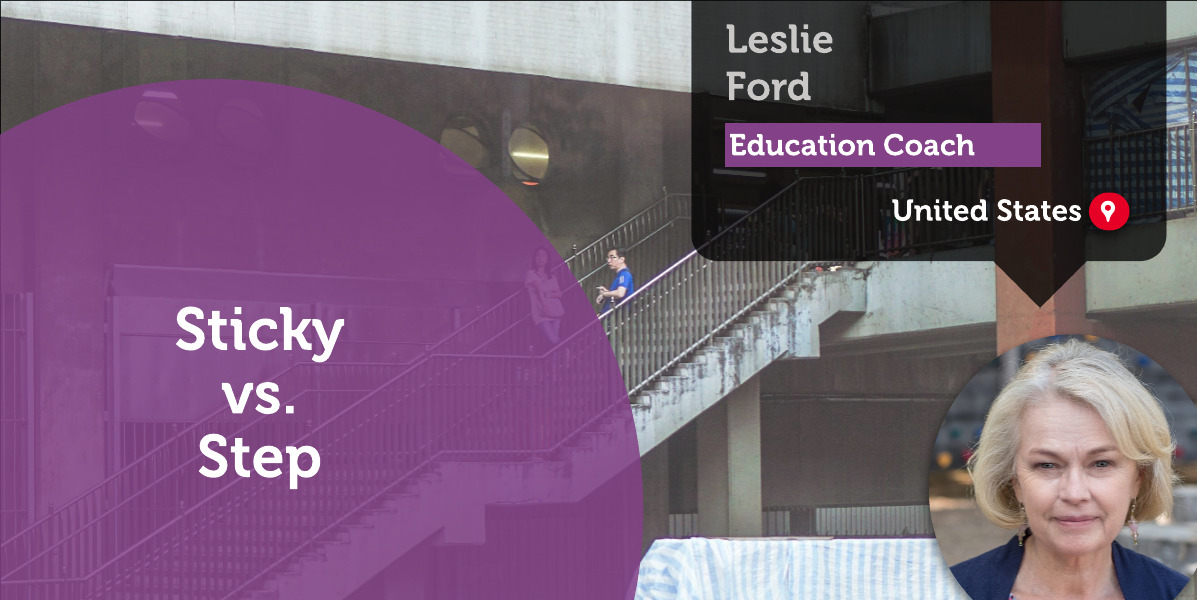
Personal Learning: Sticky vs. Step
the Mississippi River empties into the gulf and the gulf enters the sea and so forth, none of them emptying anything, all of them carrying yesterday forever on their white tipped backs, all of them dragging forward tomorrow. it is the great circulation of the earth’s body, like the blood of the gods, this river in which the past is always flowing. every water is the same water coming round. everyday someone is standing on the edge of this river, staring into time, whispering mistakenly: only here. only now. Lucille Clifton
Power Tools give us the opportunity to open up our thinking, challenge our state of mind and beliefs, and create new learning. Clifton’s inspiring poem reminds us that, like the river, we are always churning and flowing to the desired destination. Our thinking, beliefs, and past experience inform but do not fully describe us, as we are beings capable of learning, stretching, and becoming.
When you use these Power Tools, personal learning is an invitation to assume a new perspective and perhaps discover something about yourself or others. Take the time to read, apply, and reflect as you use them.
 Sticky vs. Step
Sticky vs. Step
Fear is the glue that keeps you stuck. Shannon L. Alder
Learning Objective
When the difference between making progress and feeling stuck can be defined and measured over time, using small, focused steps can be a powerful tool to move us forward. Learning to spot the times when we are just not moving and giving our effort attention can make the difference between progress and inertia.
Definition
As trained professionals and adults, we’d like to believe that not only do we know the skills we need to solve a problem, but we can use them when we need them. Life is sometimes more complicated than that. Even well-trained and confidence people find themselves stuck when a situation presents with too many emotions, the heavy weight of expectations, culture, role, and position, or just catches us and spins us into inertia and we are stuck. That feeling of “this is just all too sticky” comes over us. We can’t move on.
That breath of fresh air we are needing is actually centered in our brain. When things feel sticky, we see few if any alternatives. It’s like our vision closes down to a small, single point. We need to take the time and form the intention to be open, to allow our brain to shift. The intention to be open can be used by the mind to gear up our neural system and make it ready to receive, focus and sense. Daniel Siegal’s research reveals that it’s a higher-order state that helps us to build awareness and can move us to action.
Margaret Wheatley brings the internal view of neural concepts to outward practical application:
Although we live in a world completely revolutionized by information, it is important to remember that it is knowledge we are seeking, not information. Unlike information, knowledge involves us and our deeper motivations and dynamics as human beings. We interact with something or someone in our environment and then use who we are – our history, our identity, our values, habits, beliefs – to decide what the information means. In this way, through our construction, information becomes knowledge. Knowledge is always a reflection of who we are, in all our uniqueness. It is impossible to disassociate who is creating the knowledge from the knowledge itself.
Example
When we are in sticky situations, we can take advantage of our ability to reflect. Take a minute, a time out. Set other things aside. Allow yourself a space where you can pay attention to yourself. Engage the tool of mindful thinking where you are thinking about how you are thinking, sort of sitting on your own shoulder. What are the parts of this sticky moment? What is holding you in place? What would it take to move, if you could?
Think of the journey of a sailboat. Moving forward depends entirely on the pressure of the wind against the full, open sail. A steady breeze is your best friend to tack around a lake. But in a pinch, short gasps and puffs will also move the boat forward. Without the invisible but consistent support of wind, the boat is lifeless, stuck. A sailor’s term for that moment is “in the doldrums”. Nothing, literally nothing we do will help us move forward in that boat until the wind returns.
Those times remind us that we need to keep it simple. Think of a step. A very small one, just like those short puffs of air. One that we can create, measure, and take in a short period of time. And then another, and another, until we begin to see that we have created a new pattern that has carried us out of the stickiness of a situation and onto the more positive ground. Just by doing a little, when we can, as we can. And then recognizing our success.
Application
Identify: Name a situation where you have been feeling it was just too sticky to move forward into action.
When you are ready to move out of a sticky feeling, think of tiny steps that will work for you. Make a note of the kinds of steps you are willing to take.
Margaret Wheatley’s quote points us toward knowledge, not information as the important goal. This can be self-knowledge, to better see yourself making steps in a situation, or knowledge of others when they are feeling sticky. How can this be useful for you?
ICF Competency: Evokes Awareness
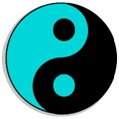 Balancing Forces
Balancing Forces
Explanation Driving force vs. Restraining force
Definition
In Ancient Chinese philosophy, the concept of balancing opposites is represented by the dark and light spaces shared in the yin-yang symbol. This simple graphic reminds us how connected and even necessary seemingly conflicting forces may be in our lives and the world.
When we use this symbol in our thinking, it allows us to see how different ideas complement each other, much as light and dark act as companions to each other. In the area of coaching, this may help in two ways.
Module Summary
Every time we choose an action, we are weighing two forces: what is pushing us toward a new choice, and what may be pulling us back? These are called driving and restraining forces. If we look closely, both forces can be weighed as we consider the best next step.
Even ideas that we don’t like as well at times are the better choice for a situation when considering the whole picture. This balance helps us see that our choices may have more than one outcome for ourselves and others. There may also be a long-term benefit we would prefer and so choose a different short-term solution.
Application
Evan had a choice to make as the leader of the high school. A parent who had become disruptive at the last basketball game needed attention. Evan was torn between adding more conflict to an already heated situation and holding similar expectations for spectators as team members.
He was wise enough to take a moment of reflection with a colleague who helped him to look not only at the parent and the expectations from the community but his expectations of himself as a leader. Given all the information, Evan could see a clear choice: reeducate the parent about expectations, set limits to any further infractions, and put it in writing so that his message is clear and may be considered important to an angry fan.
Unresolved issues in our personal or professional life may also cause us imbalance. Consider the different development levels of children in a home that may lead to friction that won’t be easily resolved. Or part of your job that you really don’t like to do that lingers in your to-do pile. Maybe there is someone in the community or your relationship circle whose interaction with you leaves you feeling out of balance.
- This tool will help you balance the “two sides” in many choices. Take a moment to get quiet inside yourself. What is your reaction, emotion, and/or thought, to this concept? Can you see yourself using it in your life?
- Pick a time lately, either personally or at work, when you have felt “torn” or undecided between choices about what to do. Draw a line down a piece of paper. On one side, put in writing the restraining forces you felt in this situation. Use the other side to write down the driving forces. Then reflect: how do they play out against each other? Which pieces will you select to be part of your response?
- Once you’ve made your selection(s), how will you evaluate its effectiveness for the situation? What will your criteria be?
Coaching Application
In professional situations, it is common for others to think the answer to a situation is simple. Other colleagues, your supervisor, and even the public might tell you they have the exact answer to the problem you are working on – it’s easy. Although we may be tempted to give in to that simple thinking, most of us know that problems usually have lots of moving parts. We need time to consider all of them to reach the best alternative. Slowing the process down, and asking hard questions about the outcome is worth the investment of time and may lead the client to a better resolution.
ICF Competency: Facilitates Client Growth
 Stem vs. Leaf: Single vs. Layered intervention
Stem vs. Leaf: Single vs. Layered intervention
Explanation
Clients who complete the Gallup Strengthsfinders Survey or other rating gain tools which help them to be aware of the multiple choices available for problem-solving and working together. As they become more aware of their distinct areas of talent, it is energizing to encourage consider combining separate areas for a layered approach. This strategy makes full use of each person’s array of talent and opens up new possibilities for building relationships and meeting goals.
Knowing and being able to effectively bring your talent to a situation or problem gives what Don Clifton called “power and edge”. That captures the assurance which comes from knowing your potential and being able to apply yourself appropriately to situations both professionally and personally.
Clients identifying and reviewing areas of talent will make decisions about when the use of a single, distilled focus (stem) or combining multiple areas of talent or strategies is the right decision for them and their working or personal environment (leaf).
Definition
The model of a stem (single talent) and leaf (pairing of multiple talent(s)) helps us see the difference between approaches to solving problems or building working relationships.
The stem, or single talent approach, allows a client to see an aspect of themselves that is uniquely matched to a job description, problem, goal, or relationship.
The stem, or multiple talent approach, helps to problem-solve what several talents might bring to the same circumstances. A multi-talent approach would allow a thoughtful combination of forces to strengthen an intervention (time, space, resources, talent, preferences).
Application
Talent: Arranger
People who apply the talent Arranger can organize but also have flexibility. They are good at arranging all of the resources for maximum productivity. They like complicated challenges were thinking on their feet will result in a positive outcome.
- Clarify- focus on the emotion, detail, and purposeful selection
- Repetition- choose from known responses without deviation
- Fixed vs Growth mindset
Talent: Responsibility
People in this theme take ownership of what they say they will do. They are committed to stable values, like honesty and loyalty.
- They deliver on a task
- Dependable, they keep their promises
- Because they value keeping their word, they don’t want to let people down
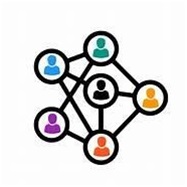 When these two areas of talent are combined, the synergy is explosive! Someone who can intuitively place people to do their best, who wants to and can make effective designs and arrangements for resources, and who is deeply committed to completing tasks or meeting goals- what an ideal set! This is an example of the whole being greater than the two individual talents alone.
When these two areas of talent are combined, the synergy is explosive! Someone who can intuitively place people to do their best, who wants to and can make effective designs and arrangements for resources, and who is deeply committed to completing tasks or meeting goals- what an ideal set! This is an example of the whole being greater than the two individual talents alone.
Reflection
- If you are able to take the Gallup Strengthsfinders
The survey, reading your Top 5 Signature Report will provide you with information about the talents and potential strengths available to you. If you are not using this tool, spend a quiet moment and write five areas where you believe you have unique talent and quality to offer an organization or your personal life.
- Make a chart for yourself with two paired areas of talent. Describe how these particular traits are of great use to use, and also note when they get in your way. Then compare the two lists, to see how the talents may resonate and magnify each other.
- Talents can also be misapplied. We call that “being in the basement”. Review the list you made for how the two talents together might be unhelpful if you are unaware or misapply them.
Coaching Application
Clients who wish to improve or advance their careers will benefit from this exercise that looks at how you recognize your own unique talents and gifts. Once this is established, it should be easier to spot other and different talents in those around you. With that point of view, communication that goes right to the strength of the other person or team becomes easier and more productive.
ICF Competency: Evokes Awareness
References: Coaching Strengths: Accelerated Strengths Coaching, Gallup Incorporated 2014 Clifton StrengthsFinder Resource Guide for Coaches, Gallup Incorporated
Full: Hope vs. Doubt
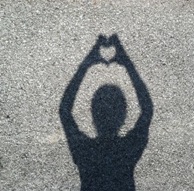 In breaking apart the many parts of hope, and holding it against doubts that we may have, clients can use this as a visual tool to plan as both of these emotions play out in our life and work.
In breaking apart the many parts of hope, and holding it against doubts that we may have, clients can use this as a visual tool to plan as both of these emotions play out in our life and work.
Definition
Hope: Belief that we can make something different, and improve; an optimistic state of mind where we can see the possibility of a positive outcome
Doubt: A lack of conviction, the inability to make a decision between two ideas, or things.
When we can identify the difference between a hopeful versus doubtful lens to apply to problem-solving and choosing, our lives have the potential to open up to us with a wider array of choices and the assurance that, whatever the outcome, we remain in charge of the journey.
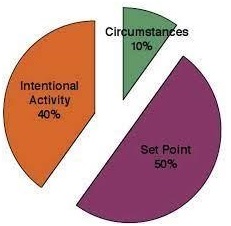 Example
Example
When we choose hope as an alternative, it is like we are walking in a neighborhood of different buildings and spaces. Optimism, the attitude that something good and meaningful can be built from the current circumstances, is an important structure in this space. So is the potential for happiness. The 40% Solution described by Sonja Lyubomirsky in The How of happiness, gives us a handy tool to think about our personal responsibility to create and maintain happiness every day. Even when we take into account the personality traits we may inherit (genetic) and the variety of circumstances in our lives (wealth, status, health, for example), it is the intentional choices we make every day that finally determine the full measure of our lives. The graph illustrates: that there are some characteristics we inherit that account for 50% of our emotions, choices, and attitude. The circumstances we find ourselves in will influence us by about 10%. But what we can do with our own intention as we define it, through our curiosity, education, consciousness, and choices will make up 40% of the full measure of our everyday happiness. This means that how we think, what we choose to do, and how we act are the final determinants of happiness.
Robert A. Cooke, Ph.D., the founder of Human Synergistics, uses a model that reflects research on leaders and managers who effectively move the work of their employees forward. One of the three Life Styles he describes termed the Constructive Style is focused on: achievement, self-actualizing, humanistic and self-encouraging, and affiliative behavior and style. Their life approach, whether at work or during personal time, is to interact with others and consider jobs or tasks in a way that will help themselves and others to achieve satisfaction. This is what we call a higher-order need- something above and beyond just slogging through each and every day.
Hope is aspirational and real at the same time. We can have an optimistic attitude and see the world as full of opportunity. But when we encounter roadblocks, when things don’t go our way, when we have to work ourselves out of a situation, hope is the fuel that keeps us going for the long haul. These are the times that stretch us, and with the hope that is part of a growth mindset, we thrive.
I like the quote.
Doubt is like a cloud that obscures your view of the truth.
When we doubt ourselves, it’s similar to the action of holding up a tape measure to a piece of wood. If only it were longer, wider, somehow it would be better. We tend to think that there is something about our experience, education, and point of view that just doesn’t measure up. It’s the dark cloud in front of our eyes that doesn’t let us see the truth: we are capable. We have talent that can be applied, and we know how and where to get help and expertise if we need it. We are not without resources.
Doubt can divide us. When circumstances change and we feel disoriented in a new environment, even if it’s in the same house or business, it isn’t unusual that we hesitate. When those changes happen, paying attention to doubt may have you feeling hopeless or that you can’t change.
Application
Before Hurricane Katrina, I always felt like I could come back home. And home was a real place, and also it had this mythical weight for me. Because of the way that Hurricane Katrina ripped everything away, it cast that idea in doubt. Jesmyn Ward
- Doubt doesn’t take into consideration your ability to develop your skills over time with work and reflection – in other words, your potential. Think of a time personally or professionally when you can identify that doubt was your first choice in a tough situation. Reflect on how you felt, what you thought, and what choices you could see from that point of view.
- Hope is something we can tuck in our pocket like a healthy snack. It will keep us nurtured and ready for a longer period of time because we never take the focus off working toward our goal. When you have used hope in a situation, how did it make you think about yourself, about the problem, about the people around you?
- Sometimes doubt is described as a shadow that is always with us. In that picture, it is something we need to deal with, and it may even be helpful. How would that apply to your point of view?
- The less helpful side of hope is when it is seen as a starry-eyed approach to a future that may never happen. None of that works for us in our life or work. How can you make sure you don’t wander into this less hopeful attitude?
ICF Competency: Evokes Awareness
References
The Mindful Brain, Daniel Siegel, W. W. Norton and Company, Inc., 2007, p177
Finding Our Way; Leadership for an Uncertain Time, Margaret J. Wheatley, BerrettKoehler Publishers, Inc., 2005, p154
The How of Happiness: A New Approach to Getting the Life You Want, Sonja
Lyubomirsky, Penguin Group, 2007 https://www.merriam-webster.com/dictionary/